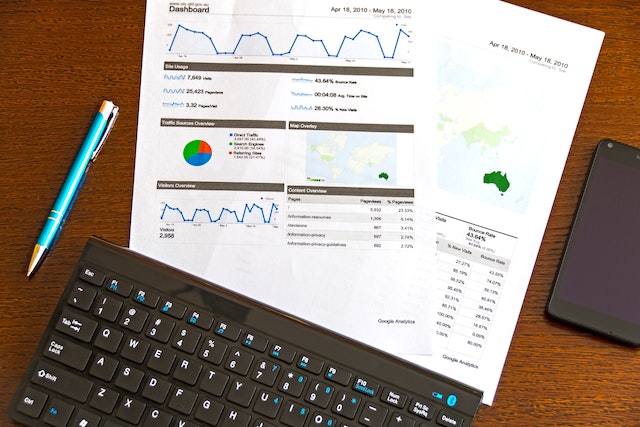
3 Essential Tips for Creating Effective Data Visualizations
Living in the digital age, the importance of effectively utilizing data has skyrocketed. Businesses heavily rely on data to drive their decision-making processes and come up with strategic plans. For this reason, visualizing data has emerged as a vital tool for companies, allowing them to interpret massive volumes of data quickly and effectively. However, poorly executed charts and graphs can often lead to confusion rather than clarity. In this article, we will delve into the art of creating effective data visualizations, learn how to use a gauge chart, and unveil certain essential tips and tricks to do so with ease.
Understanding the Basics of Data Visualization

Alt text: Two employees going over data charts and discussing how to use a gauge chart
The first step toward creating effective data visualizations is understanding the fundamentals. This field is all about presenting data in a graphical or visual format, making the information easier to understand and analyze. Complex data sets can be interpreted at a glance, leading to quicker decision-making. It aids in identifying patterns, trends, outliers, and correlations in your data that would be challenging to understand in raw, numerical form.
Data charts is not just about translating numbers into graphs. It’s much more than that. It combines both the scientific and artistic domains, using imagery to tell a story with data. The best graphs and charts are simple yet powerful, highlighting the critical aspects of the data without overcomplicating the view. Different kinds of data demand different kinds of visualizations. For example, if you want to understand the performance metrics, you might want to learn how to use a gauge chart.
1. Playing With Colors and Shapes
Colors and shapes play a vital role in data. They are not mere decorative elements but integral tools that can greatly impact the readability and understanding of the graphics. A smart use of colors can highlight key information, differentiate data points, induce emotional responses, and guide the viewer’s eyes through the imagery.
The rules of color theory apply to data. For instance, using complementary colors (those opposite each other on the color wheel) helps create contrast and makes the data stand out. Analogous colors (those next to each other on the color wheel) can be used to represent variables of the same category or show gradient data. It’s important to consider color blindness as part of the design process to ensure accessibility for all viewers. Similarly, shape can be a powerful tool for differentiating data points in scatter plots and map graphs. By playing with these elements, one can create visually appealing and effective graphics.
However, one must remember that the misuse of colors and shapes can lead to inaccurate interpretations and confusion. Therefore, it is essential to use these elements judiciously, keeping the focus on the data itself. Balance is key, and while striking imagery is appealing, never allow the design to overshadow the data.
2. Ensuring Clear and Effective Storytelling

Alt text: Businessman at desk learning how to use a gauge chart with a laptop
Visualizing data is essentially a form of storytelling. Beyond showcasing data, the graphics should tell a story, providing clarity and insights. This requires structuring your data in a logical order, highlighting the critical points, and maintaining a focus on the message. The best charts and graphs are those that communicate their intended idea quickly and clearly, leaving little space for the viewer’s own interpretation.
A story through charts can be a simple progression or a complex, layered narrative. Regardless, every aspect of the chart or graph should contribute to that story. One must avoid including unnecessary elements that could distract from the main message. Also, avoid cluttering your graphs with too much information. Remember, the goal is to simplify the data, not complicate it.
3. Developing Interactive Charts
As we move forward in the digital age, interactivity has become a key feature of modern charts and graphs. Interactive visualizations allow users to manipulate the graphical representation of the data, enabling them to explore different perspectives, discover new insights, and engage deeply with the information. Interactivity can range from a simple hover effect displaying more details to a multi-layered dashboard with a wide range of controls and functions.
Altogether, effective data visualization is not just about showcasing data in a pretty picture. It involves a careful balance of simplicity and detail, art and science, creativity and logic. With these essential tips, you’ll be on the right path to creating masterful data charts that not only look good but also tell compelling stories, offer valuable insights, and drive sound decision-making.




Comments are closed.